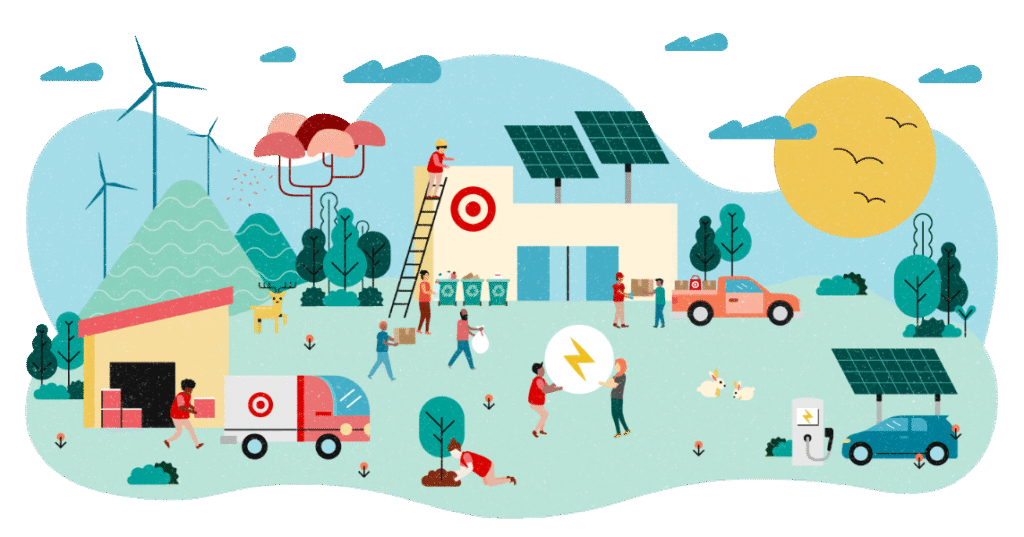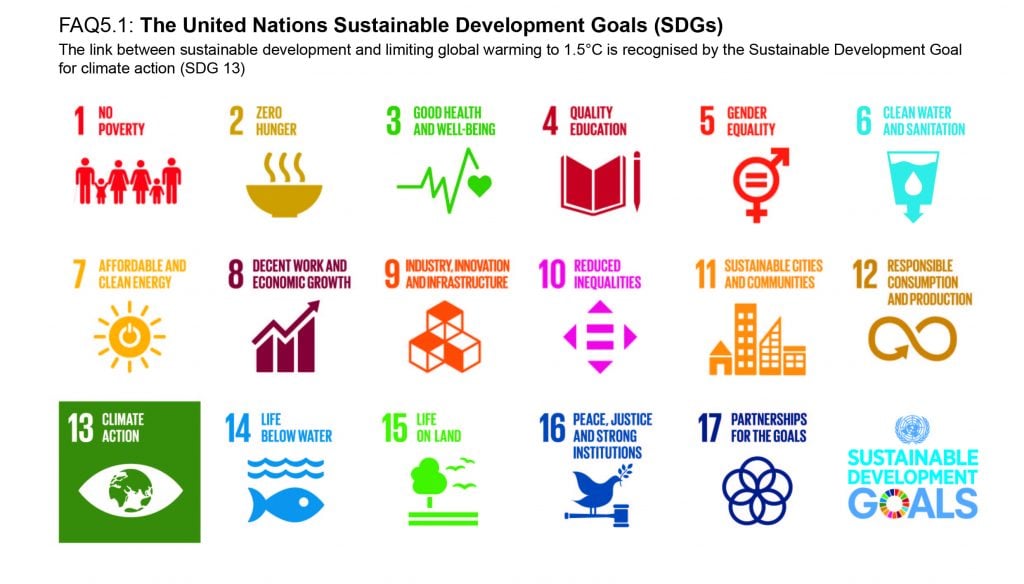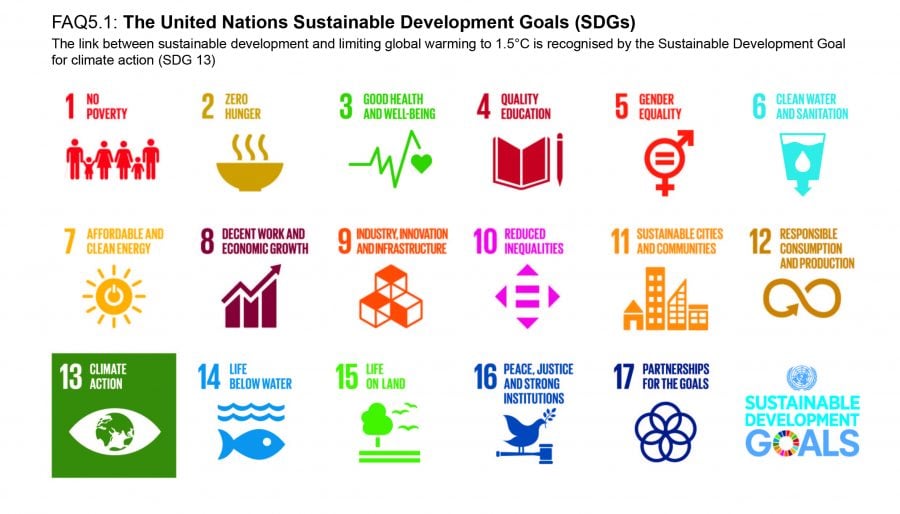How sustainable economic growth aligns climate change goals

The pursuit of sustainable economic growth and climate change mitigation are often viewed as competing priorities, with the former perceived as a driver of environmental degradation and the latter seen as a constraint on economic development. However, a growing body of evidence suggests that these goals are not mutually exclusive, and that sustainable economic growth can, in fact, be a key enabler of climate action. By adopting a long-term perspective and integrating climate considerations into economic decision-making, countries can unlock new opportunities for sustainable growth while reducing the risks associated with climate change.
- Aligning Sustainable Economic Growth with Climate Change Objectives
-
Achieving Climate Change Objectives through Sustainable Economic Development Strategies
- What role does sustainable development play in mitigating climate change impacts on economic growth?
- Economic Benefits of Sustainable Development
- Climate Change Resilience through Sustainable Development
- Integrating Sustainable Development into Economic Planning
- How do the SDGs support achieving climate change mitigation objectives within sustainable economic frameworks?
- Integration of Climate Change Mitigation into SDG Frameworks
- SDG Targets and Indicators for Climate Change Mitigation
- Economic Benefits of SDG-aligned Climate Change Mitigation
- Which Sustainable Development Goals directly address climate change mitigation?
- Key Areas of Focus for SDG 13
- Climate Change Mitigation Strategies
- Implementation and Cooperation
- What role do the Sustainable Development Goals play in driving climate-resilient economic growth?
- Promoting Climate-Resilient Infrastructure
- Fostering Climate-Resilient Agriculture
- Supporting Climate-Resilient Water Management
-
Frequently Asked Questions
- What is sustainable economic growth and how does it relate to climate change?
- How can sustainable economic growth help achieve climate change goals?
- What role do governments play in aligning economic growth with climate change goals?
- Can sustainable economic growth be achieved without compromising economic development?
Aligning Sustainable Economic Growth with Climate Change Objectives
Sustainable economic growth and climate change goals are intricately linked, as the pursuit of economic development often intersects with the need to mitigate and adapt to climate change. Achieving a balance between these two objectives requires a nuanced understanding of their interdependencies. Essentially, sustainable economic growth involves creating economic opportunities while minimizing environmental degradation and ensuring that development is equitable and resilient. This alignment is crucial for long-term prosperity and environmental stewardship.
Economic Growth and Environmental Impact
The relationship between economic growth and environmental impact is complex. Traditionally, economic growth has been associated with increased greenhouse gas emissions and environmental degradation due to the increased consumption of resources and energy. However, this does not have to be the case. By adopting sustainable practices and transitioning to a low-carbon economy, countries can achieve economic growth while reducing their environmental footprint. This can be achieved through investments in renewable energy, green infrastructure, and sustainable agriculture.
Climate Change Mitigation and Adaptation Strategies
Effective climate change mitigation and adaptation strategies are essential for aligning economic growth with climate change goals. Mitigation strategies focus on reducing greenhouse gas emissions, while adaptation strategies aim to enhance resilience to the impacts of climate change. This can involve implementing carbon pricing, promoting energy efficiency, and investing in climate-resilient infrastructure. By integrating these strategies into economic planning, countries can minimize the risks associated with climate change and capitalize on the opportunities presented by the transition to a low-carbon economy.
Policy Frameworks for Sustainable Development
Robust policy frameworks are critical for achieving sustainable economic growth that aligns with climate change objectives. These frameworks should promote sustainable development, encourage green investment, and support climate-resilient development. They should also facilitate international cooperation and knowledge sharing to address the global nature of climate change. Effective policy frameworks can help to create an enabling environment for sustainable economic growth, driving innovation and investment in low-carbon technologies and practices.
| Economic Sector | Sustainable Practices | Climate Change Benefits |
|---|---|---|
| Energy | Transition to renewable energy sources | Reduce greenhouse gas emissions |
| Agriculture | Adopt sustainable agriculture practices | Enhance carbon sequestration |
| Infrastructure | Invest in green infrastructure | Improve climate resilience |
Achieving Climate Change Objectives through Sustainable Economic Development Strategies
What role does sustainable development play in mitigating climate change impacts on economic growth?

Sustainable development plays a crucial role in mitigating climate change impacts on economic growth by integrating economic, social, and environmental considerations into decision-making processes. This approach recognizes that economic growth, social well-being, and environmental protection are interconnected and that achieving a balance among these factors is essential for long-term prosperity.
Economic Benefits of Sustainable Development
Sustainable development can help mitigate the economic impacts of climate change by promoting the use of renewable energy sources, increasing energy efficiency, and adopting climate-resilient infrastructure. This can lead to cost savings, improved competitiveness, and new economic opportunities. Some of the key economic benefits of sustainable development include:
- Reduced greenhouse gas emissions through the adoption of clean energy technologies
- Improved resource efficiency and reduced waste
- Creation of new job opportunities in the green economy
Climate Change Resilience through Sustainable Development
Sustainable development can also help build resilience to the impacts of climate change, such as sea-level rise, droughts, and extreme weather events. By investing in climate-resilient infrastructure, promoting sustainable agriculture practices, and protecting natural ecosystems, communities can reduce their vulnerability to climate-related disasters. Some of the key strategies for building climate resilience include:
- Implementing early warning systems for extreme weather events
- Promoting climate-smart agriculture practices
- Restoring and protecting natural ecosystems, such as mangroves and wetlands
Integrating Sustainable Development into Economic Planning
To effectively mitigate the impacts of climate change on economic growth, sustainable development must be integrated into economic planning processes. This requires a coordinated approach that involves governments, businesses, and civil society organizations working together to achieve common goals. Some of the key steps for integrating sustainable development into economic planning include:
- Developing and implementing policies that support sustainable development
- Investing in data collection and analysis to inform decision-making
- Fostering international cooperation and knowledge sharing on sustainable development
How do the SDGs support achieving climate change mitigation objectives within sustainable economic frameworks?

The Sustainable Development Goals (SDGs) play a crucial role in supporting the achievement of climate change mitigation objectives within sustainable economic frameworks. The SDGs provide a comprehensive framework for countries to address the complex and interconnected challenges of sustainable development, including climate change. By integrating climate change mitigation into the SDGs, countries can ensure that their economic development is sustainable, equitable, and environmentally conscious.
Integration of Climate Change Mitigation into SDG Frameworks
The SDGs provide a platform for integrating climate change mitigation into national development plans and strategies. This integration enables countries to align their climate change mitigation efforts with their broader development goals, ensuring a more coordinated and effective approach to addressing the challenges of climate change. Some key aspects of this integration include:
- Mainstreaming climate change mitigation into national policies and planning frameworks
- Enhancing international cooperation and knowledge sharing on climate change mitigation
- Promoting the development and transfer of climate-friendly technologies
SDG Targets and Indicators for Climate Change Mitigation
The SDGs have specific targets and indicators that support climate change mitigation. For example, SDG 7 focuses on ensuring access to affordable, reliable, and modern energy for all, while SDG 13 focuses on taking urgent action to combat climate change and its impacts. These targets and indicators provide a clear roadmap for countries to follow in their efforts to mitigate climate change. Some key targets and indicators include:
- SDG 7.2: Increase substantially the share of renewable energy in the global energy mix
- SDG 13.2: Integrate climate change measures into national policies, strategies, and planning
- SDG 12.6: Encourage companies to adopt sustainable practices and report on sustainability
Economic Benefits of SDG-aligned Climate Change Mitigation
Achieving climate change mitigation objectives within the framework of the SDGs can have numerous economic benefits. By transitioning to a low-carbon economy, countries can create new economic opportunities, stimulate innovation, and reduce the economic risks associated with climate change. Some key economic benefits include:
- Creating new job opportunities in the renewable energy and green technology sectors
- Stimulating economic growth through investments in low-carbon infrastructure
- Reducing the economic costs of climate change-related disasters and impacts
Which Sustainable Development Goals directly address climate change mitigation?

The Sustainable Development Goals (SDGs) that directly address climate change mitigation are primarily SDG 13: Climate Action. This goal focuses on taking urgent action to combat climate change and its impacts. It involves implementing policies and measures to reduce greenhouse gas emissions, promoting the use of renewable energy, and enhancing the resilience of communities and ecosystems to the impacts of climate change.
Key Areas of Focus for SDG 13
SDG 13 encompasses several key areas, including strengthening resilience and adaptive capacity to climate-related disasters, integrating climate change measures into national policies and strategies, and improving education, awareness-raising, and human and institutional capacity on climate change mitigation, adaptation, impact reduction, and early warning. The main actions under this goal can be broken down into:
- Enhancing the capacity of countries to develop and implement climate-resilient strategies.
- Promoting the use of renewable energy sources to reduce dependence on fossil fuels.
- Supporting research and development of climate-friendly technologies.
Climate Change Mitigation Strategies
Mitigating climate change involves a range of strategies, from reducing greenhouse gas emissions to protecting and reforestation efforts that absorb carbon dioxide. Key strategies include transitioning to renewable energy sources, improving energy efficiency, and implementing sustainable land use practices. These efforts are crucial for achieving the goals outlined in SDG 13 and can be further detailed as:
- Transitioning to renewable energy to reduce greenhouse gas emissions.
- Implementing energy-efficient practices across all sectors.
- Protecting and restoring natural ecosystems that absorb carbon dioxide.
Implementation and Cooperation
The successful implementation of SDG 13 requires international cooperation, financial support, and technology transfer to developing countries. It also involves mobilizing resources from various sources and enhancing the capacity of countries to implement climate actions effectively. Key elements of implementation include:
- Strengthening international cooperation to support climate change mitigation efforts.
- Mobilizing financial resources to support developing countries in their climate actions.
- Enhancing the capacity of countries to develop and implement effective climate change mitigation and adaptation strategies.
What role do the Sustainable Development Goals play in driving climate-resilient economic growth?

The Sustainable Development Goals (SDGs) play a significant role in driving climate-resilient economic growth by providing a comprehensive framework for countries to achieve economic development while addressing the challenges posed by climate change. The SDGs, adopted by the United Nations in 2015, aim to end poverty, protect the planet, and ensure peace and prosperity for all. Climate-resilient economic growth is critical to achieving several SDGs, including SDG 8 (Decent Work and Economic Growth), SDG 9 (Industry, Innovation, and Infrastructure), and SDG 13 (Climate Action).
Promoting Climate-Resilient Infrastructure
The SDGs encourage the development of climate-resilient infrastructure, which is critical for sustaining economic growth in the face of climate change. Investing in climate-resilient infrastructure can help reduce the economic losses caused by climate-related disasters. Some key strategies for promoting climate-resilient infrastructure include:
- Conducting thorough risk assessments to identify potential climate-related hazards and vulnerabilities
- Incorporating climate resilience into infrastructure design and planning
- Implementing green infrastructure solutions, such as green roofs and green walls, to reduce urban heat islands and improve air quality
Fostering Climate-Resilient Agriculture
The SDGs also promote climate-resilient agriculture, which is essential for ensuring food security and sustaining rural livelihoods in the face of climate change. Climate-resilient agriculture involves using practices and technologies that help farmers adapt to changing weather patterns and rising temperatures. Some key strategies for fostering climate-resilient agriculture include:
- Promoting the use of climate-resilient crop and animal varieties
- Implementing conservation agriculture practices, such as reduced tillage and mulching, to improve soil health and reduce erosion
- Supporting agro-insurance programs to help farmers manage climate-related risks
Supporting Climate-Resilient Water Management
The SDGs emphasize the importance of climate-resilient water management, which is critical for sustaining economic growth and human well-being in the face of climate change. Climate-resilient water management involves using practices and technologies that help reduce the risks associated with water scarcity and flooding. Some key strategies for supporting climate-resilient water management include:
- Implementing water conservation measures, such as efficient irrigation systems and water-saving technologies
- Promoting watershed management practices, such as reforestation and soil conservation, to reduce the risk of flooding and landslides
- Developing early warning systems for floods and droughts to help communities prepare and respond to climate-related water-related hazards
Frequently Asked Questions
What is sustainable economic growth and how does it relate to climate change?
Sustainable economic growth refers to the expansion of a country's economy without depleting its natural resources or causing environmental harm. It is closely linked to climate change as a sustainable economy can help mitigate the effects of climate change by reducing greenhouse gas emissions and promoting eco-friendly practices. This alignment is crucial for achieving long-term economic and environmental stability.
How can sustainable economic growth help achieve climate change goals?
Sustainable economic growth can help achieve climate change goals by encouraging the use of renewable energy, reducing waste, and promoting sustainable consumption patterns. It can also involve the development of green technologies and infrastructure, creating jobs and stimulating innovation while minimizing environmental degradation. By adopting sustainable practices, economies can reduce their carbon footprint and contribute to global efforts to combat climate change.
What role do governments play in aligning economic growth with climate change goals?
Governments play a crucial role in aligning economic growth with climate change goals by implementing policies that support sustainable development. This can include setting emission targets, investing in green infrastructure, and providing incentives for businesses to adopt sustainable practices. Effective governance and regulation can help create a level playing field for sustainable businesses to thrive, driving economic growth while reducing environmental harm.
Can sustainable economic growth be achieved without compromising economic development?
Yes, sustainable economic growth can be achieved without compromising economic development. In fact, a sustainable economy can create new opportunities for growth and job creation in emerging sectors such as renewable energy and green technology. By adopting sustainable practices and investing in human capital, economies can achieve long-term prosperity while minimizing environmental degradation and reducing the risks associated with climate change.

Leave a Reply